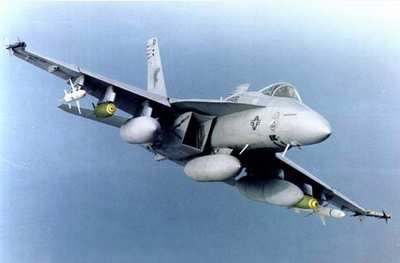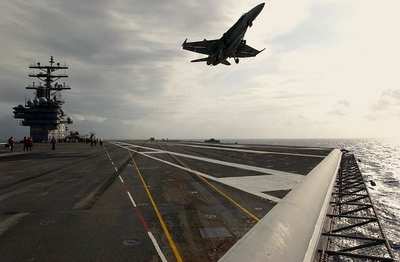New Device Will (Undoubtedly) Will Save Lives
 A new device to train aviators to
recognize the signs and symptoms of hypoxia offers a safer and more
realistic environment for crewmembers to learn proper emergency
procedures.
A new device to train aviators to
recognize the signs and symptoms of hypoxia offers a safer and more
realistic environment for crewmembers to learn proper emergency
procedures.
Hypoxia, insufficient oxygen to the brain, occurs rapidly at
high altitude. In the past two years, naval aviation has
experienced more than a dozen in-flight hypoxia incidents, one of
which resulted in the death of the pilot and the loss of an
aircraft.
“Most hypoxia incidents during flights result from oxygen
system malfunctions, loss of cabin pressurization and other
equipment failures,” said Lt. Cmdr. Mike Prevost, aerospace
physiologist and director of safety and standardization at the
Naval Survival Training Institute. "Hypoxia affects every person
differently. The only way to determine how an individual will react
under hypoxic conditions is to go through the actual
experience."
Recently, researchers from the Naval Aerospace Medical Research
Laboratory (NAMRL) successfully completed testing on the Reduced
Oxygen Breathing Device (ROBD), a system they developed. The ROBD
duplicates the hypoxia experience in a normal room at ground level
using a standard aviation mask and a software program that adds
nitrogen to room air, explained Prevost.

NAMRL will transition the ROBD to the Naval Survival Training
Institute this month to be incorporated into the training program
during the spring of 2004. The new curriculum is scheduled for
release at selected survival training centers on the east and west
coasts.
For more than 50 years, aerospace physiologists and technicians
have provided hypoxia training to Navy and Marine Corps aviators.
The current training uses a lower pressure chamber to simulate an
altitude of 25,000 feet. While in the chamber, aviators remove
their oxygen masks for four minutes and experience hypoxic
symptoms, which include everything from euphoria, lightheadedness
and visual disturbances to muscle twitching, mental confusion and
cyanosis (bluing of the skin, prevalent around the nose, mouth, and
fingertips).
“Hypoxia training in an altitude chamber does have its
drawbacks. Namely, the training environment is a bit unrealistic
and there are numerous medical risks including decompression
sickness (DCS) and barotraumas (damage to the ears and sinuses
caused by the change in pressure),” added Lt. Anthony Artino,
director of Human Performance and Training Technology at the Naval
Survival Training Institute.
“Using the ROBD may be more effective training for
aviators. The advantages are numerous and include the ability to
induce hypoxia with no risk of DCS or barotraumas and the ability
to operate the device almost anywhere, including inside a fleet
simulator," said Artino.

Ultimately, the Naval Survival Training Institute hopes to
provide better, more realistic training by using a combination of
the altitude chamber and the ROBD. They intend to take full
advantage of the chamber’s proven success as a training
device while supplementing that training with the ROBD’s
portability, flexibility, and enhanced realism to help move naval
aviation survival training into the next century.
 ANN's Daily Aero-Linx (05.02.24)
ANN's Daily Aero-Linx (05.02.24) ANN's Daily Aero-Term (05.02.24): Touchdown Zone Lighting
ANN's Daily Aero-Term (05.02.24): Touchdown Zone Lighting Aero-News: Quote of the Day (05.02.24)
Aero-News: Quote of the Day (05.02.24) ANN FAQ: Contributing To Aero-TV
ANN FAQ: Contributing To Aero-TV NTSB Final Report: Cirrus Design Corp SR20
NTSB Final Report: Cirrus Design Corp SR20





